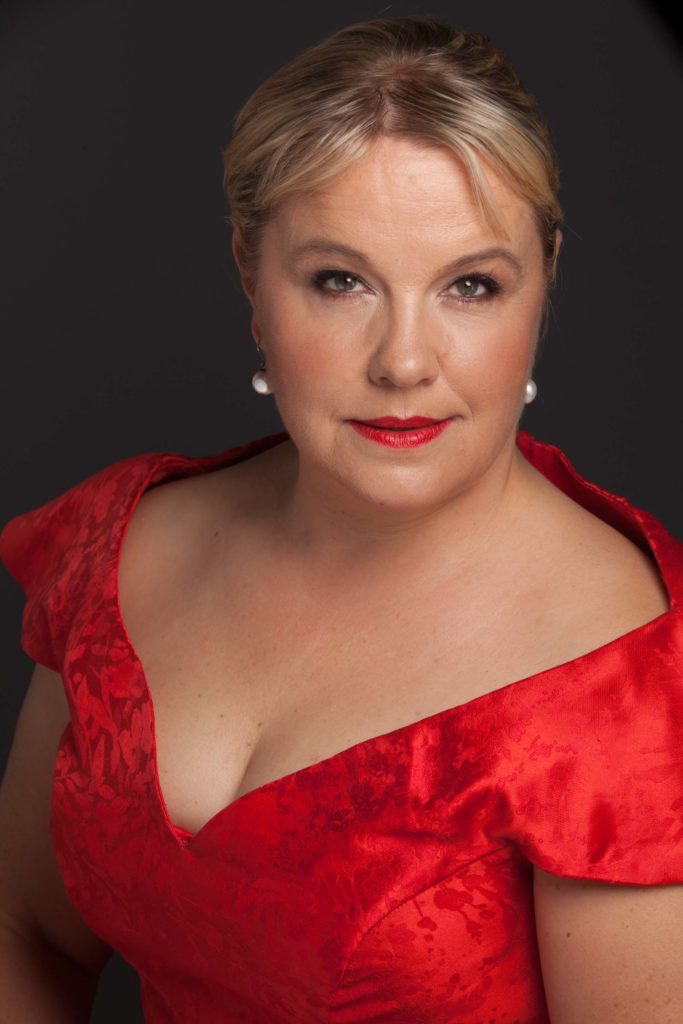
Anu Komsi. Kuva © Ville Paasimaa.

Kristian Sallinen. Kuva © Antti Rintala.
Helsingin kaupunginorkesteri sunnuntaina 8.12.2024. Kristian Sallinen, kapellimestari, Anu Komsi, sopraano. Musiikkitalo. Konsertti on katsottavissa Areenassa.
Filharmonia juhli suomalaisen musiikin päivää ja Sibeliusta varsin omaperäisellä ohjelmalla…, jossa ei ollutkaan yhtään Sibeliusta. Päänumerona oli tietenkin konsertin päättänyt Leevi Madetojan toinen sinfoniavuodelta 1918, siis tuon ”vara-Sibeliuksemme” merkittävä orkesteriteos, jossa hän astuu esiin Sibeliuksen varjosta. Alfred Einsteinin teoria Grösse in der Musik, musiikin suuruus, ei taidakaan pitää paikkaansa eli että suuren säveltäjän rinnalla on aina toinen melkein yhtä tärkeä niin kuin Mozart ja Salieri, Beethoven ja Cherubini ja niin edelleen. Heidät erottaa tuo moniselitteinen käsite Verdichtung, tiheys, jonka voi tulkita myös psykoanalyyttisesti. Kyllä Madetojassa on tiheyttä, siitä ei ole epäilystä!
Konsertin aloitti mielenkiintoinen uutuus ja tutustuminen ainakin itselleni täysin uuteen säveltäjään Jouni Hirvelään (1982-). Kyseessä oli hänen teoksensa Muistijälkiä/Engrams tältä vuodelta. Sen tyyli, voi sanoa, oli ultra-radikaalia, se koostui pointillistisen kudoksen tavoin irrallisista sointitapahtumista, joita yleensä erottivat tauot. Idea on sama kuin vaikka John Cagen Changes-teoksessa. Tarkoitus oli aktivoida kuulija kuulemaan noiden sointirypäleiden tai -kimppujen mahdollisia yhteyksiä. Ideana hieman sama kuin ranskalaisessa nouveau romanissa, jossa ei ole lainkaan välimerkkejä, tai Apollinairen kalligrammeissa: kuulijan tehtävä on olla aktiivinen muodon luoja ja kenties piilevän narraation erottaja, ei vain passiivinen receiver, kuten sanotaan informaatioteoriassa, tai destinataire, kuten semiotiikka ehdottaa.
Hallitsevana ideana oli hieman agressiivisten vaskien törähdykset versus heleät, harpun, jousien ja puupuhaltimien lausahdukset. Sointi varioi lakkaamatta hienostuneesti. Jos kyseessä oli muistikuvien seuraaminen, ei ollut ihan helppoa tunnistaa, oliko joku sävelkombinaatio kenties jo esiintynyt vai ei. Hieman keskivaiheen tuolla puolen vasket intoutuivat väkivaltaiseen purkaukseen, mutta sitä seurasikin yllättävä suvanto, tyyni katharsis, lähes koraalimainen, lineaarinen tekstuuri kuin vastauksena vaskien tarjoamaan haasteeseen. Lopussa teos vetäytyi jälleen pistemäiseen maailmaansa.
Mukanani ollut bengalilainen tohtoriopiskelijamme, joka tekee väitöstä Helsingin yliopistoon James Joycesta, kysyi: ”What is the philosophy of this music?” Hyvä kysymys! Ei se ainakaan ollut hegeliläinen hyytelömaailma vaan ennemmin atomistinen raehaulikasa, kuten Bertrand Russell on luonnehtinut tuota toista näkemystä. Mielestäni teoksen filosofia oli se, että se johdatti kuulijan ennen tuntemattomiin soiviin universumeihin, joiden merkityksen määrittelee hän itse. Näinhän se on uudessa musiikissa, josta emme voi koskaan etukäteen tietää, millaista se on tai pitäisi olla.
Jatkossa oltiin yhtä avantgarden linjalla mutta sata vuotta aiemmin. Kuultiin kaksi Aarre Merikannon harvinaisuutta Anu Komsin suvereenisti tulkitsemana. Syyssonetti, tumman synkkä laulu vuodelta 1922 ja Savannah-la-Mar vuodelta 1915, hieman romanttisempi mutta yhtälailla hallitsevana tuo Wienin koulun düstere Abblendung des Klanges. Siinä oli ehkä jopa hieman orientalismia. Komsi oli asettunut laulamaan orkesterin takaosaan korokkeelle; en tiedä oliko se oikea ratkaisu koko salin kannalta. Oma paikkani oli E5 vasemmalla eli siinä se ainakin toimi. Komsin dramaattinen esitys oli sangen vaikuttava ja sopi juuri tällaiseen musiikkiin.
Väliajan jälkeen kuultiin lisää vokaalimusiikkia, teoksia joita nimenomaan odotin. Nimittäin äärimmäisen harvoin kuultua Heidi Sundblad-Halmetta (1903-1958). Hänestä muistetaan musiikkipiireissä lähinnä vain se, että hän oli Helsingin naisorkesterin johtaja ja perustaja. Hiljattain kuultiin hänen sävellyksiään konsertissa Välimäen ja Koivisto-Kaasikin teoksen Sävelten tyttäret julkistamisessa Ritarihuoneella. Heti kiinnitin huomiotani ja innostuin: tämähän on todella omintakeista ja luovaa musiikkia. Nyt kyseessä oli kaksi Pan-myyttiin liittyvää teosta, joissa sopraano ja huilu olivat dialogissa keskenään. Oli hetkittäin suorastaan vaikea sanoa, milloin soitto alkoi ja milloin laulu. Jälkimmäisessä Pan-teoksessa Pan soittaa (1955) oli myös hauska tanssillinen välitaite, jota Komsi markkeerasi osuvin elein.
Palatkaamme Madetojaan, hänen toista sinfoniaansahan on tutkinut Erkki Salmenhaara kirjassa Suomen musiikin historia 2. Kansallisromantiikan valtavirta.1885-1918 (s. 311-313). Hän luonnehtii sitä ”kauneuden, luonnon, sodan ja resignaation sinfoniaksi”. Se on tunnustuksellinen teos liittyen säveltäjän kokemiin traagisiin tapahtumiin tuona sotavuonna. Mutta suuret sävellykset eivät tyhjene säveltäjän psykologian kuvaukseen. Sasha Mäkilä on puolestaan laatimassa tästä teoksesta kriittistä editiota ja väitöskirjaa. Sinfonia alkaa Allegro moderato -osalla, rytmikkäällä ostinatoaiheella hieman kuin Sibeliuksen II. Es-sävelen ympärille kietoutuva axis-theme, kuten L. B. Meyer sanoisi, on Salmenhaaran mielestä tyypillistä Madetojaa laskevine tersseinen – siis ei mitään triolikuviota kuten Sibeliuksella niin toistuvasti. Huipennuksen jälkeen siirrytään suoraan andanteen, jonka avaa paimentytön huhuilun puhallinaiheet hyvin lyyrisesti. Nuo aiheet säveltäjä oli kuullut kuulemma Oulunsalon metsissä kesällä 1918. Seuraava osa on teoksessa eniten ajankohtaansa viittaava meluisa, virtuoosinen orkesterifantasia à la Richard Strauss. Toisaalta johtoaiheen omainen marssiteema on mielestäni sukua Vincent d’Indyn Symphonie montagnardin kansanmusiikkilainaukselle. Madetoja opiskeli Pariisissa. Mutta hälyisä orkesterikudos vaimenee ja kooda on Madetojalle ominaista pysähtynyttä lyyrisyyttä tempossa andantino. Säveltäjä palaa sisäiseen perustempoonsa andanteen, hän on löytänyt patrie perdun, kadonneen isänmaansa.
Kristian Sallista kuulin nyt ensi kertaa mittavassa tehtävässä. Hän on yksi näitä uusia hypernuoria kapellimestaritähtiämme, jota jo viedään ulkomaille vinhaa vauhtia. Ulkonaisesti Sallista voisi pitää Robert Kajanuksen reinkarnaationa: hän on ryhdikäs, eleiltään hillitty, tyylikäs ja orkesteria kohteliaasti opastava, miellyttävä lavalla. Yleisö otti hänet vastaan erittäin lämpimästi ja innostuneesti. On jännittävää seurata, miten hänen lupaava uransa kehittyy. Toivon mukaan saamme sentään vielä kuulla hänen johtavan Suomessakin. Konsertissa oli myös paljon musiikkiväkeä, erityisesti nuoremman polven säveltäjiämme.
— Eero Tarasti




